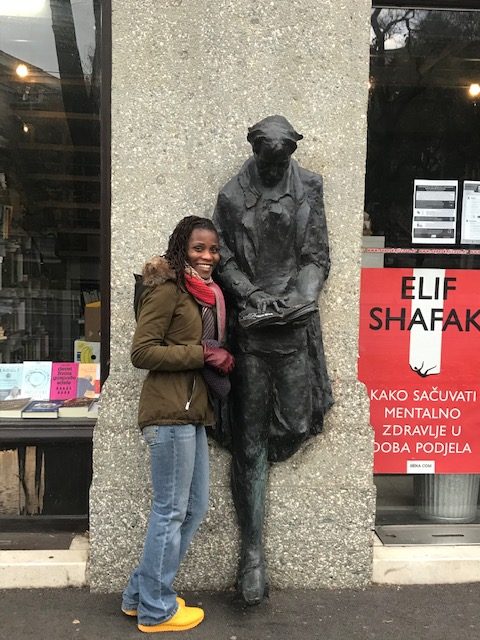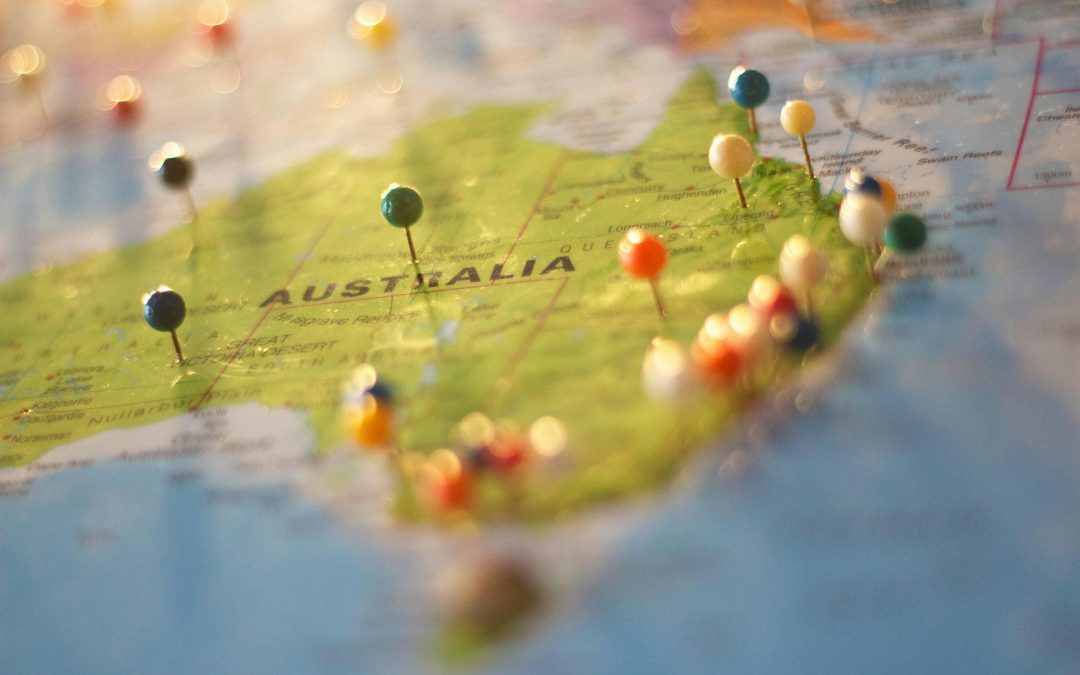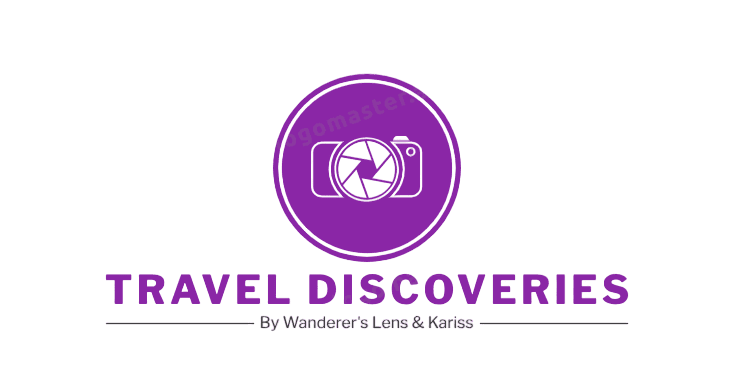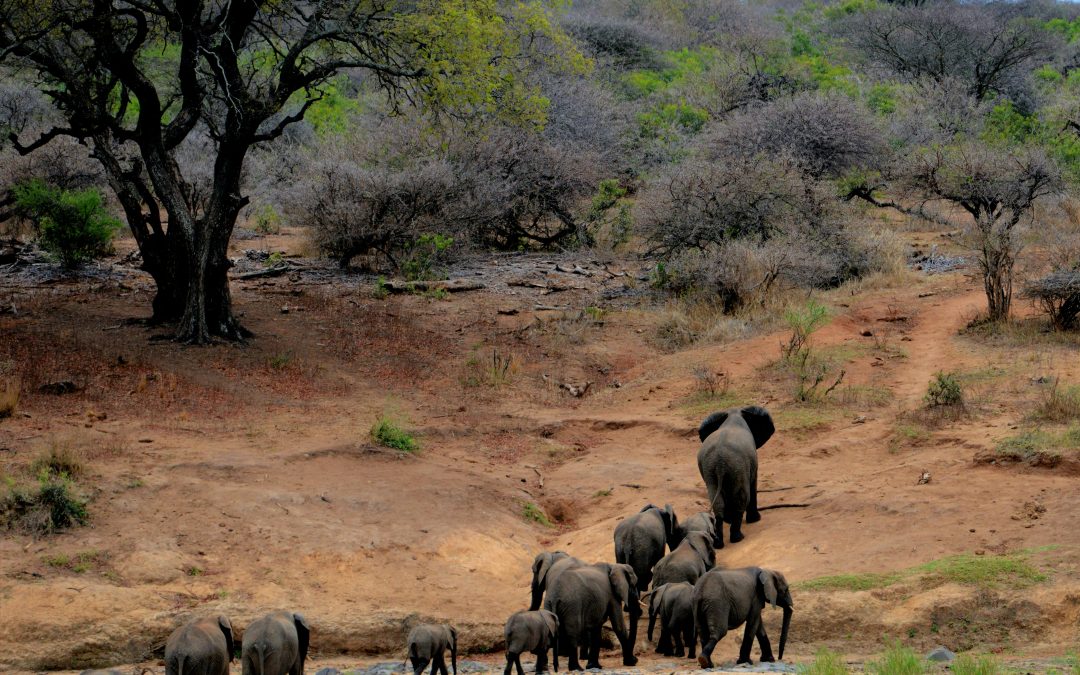
KRUGER NATIONAL PARK — Smart Guide
Kruger is two safaris at once. By day, you can roam one of the world’s great public wildlife parks on your own wheels, governed by strict rules that protect animals and people. By night (or for a different style entirely), you can hand the keys to expert guides—either on official SANParks drives inside the park, or at intimate lodges in the unfenced private reserves of the Greater Kruger, where off‑road tracking is allowed under tightly controlled ethics. This 2025 guide gives you the playbook for predator‑rich sightings, season‑smart timing, and responsible choices that keep Kruger wild for the next generation.
1) What’s New, What’s Non‑Negotiable
- No drones, period. In July 2025, SANParks re‑issued a public reminder: drones are prohibited in all national parks under the National Environmental Management: Protected Areas Act. Unauthorized operators face arrest and confiscation of equipment; restricted airspace applies even to recreational flights. Report incidents to the Kruger Emergency Call Centre. [sanparks.org]
- Conservation fees (valid to 31 Oct 2025). Daily fees for Kruger are R535 per international adult (12+), R267 per international child (2–11), with lower rates for South African citizens/residents and SADC nationals; a 1% Community Fund levy applies to accommodation/activities. [sanparks.org]
- Gate quotas & time‑slot control on peak dates. Over high‑demand periods (e.g., Easter 2025), Kruger operated entry time slots with traffic enforcement for speed and after‑hours travel. Arrive with advance bookings and respect slot windows to avoid being turned away. [sanparks.org]
What never changes: the park’s core Code of Conduct—stay in your vehicle except at designated sites; no off‑road driving; no feeding or disturbing animals; speed limits 50 km/h on tar, 40 km/h on gravel; adhere to gate hours. Rules are enforced under the Protected Areas Act, and fines/expulsion are real. [sanparks.org], [sanparks.org]
2) How Kruger Works
Public Kruger (SANParks)
- Size & access: Nearly 20,000 km² of public roads (tar and gravel), multiple gates, 12 main rest camps plus bushveld/satellite camps and a few in‑park concessions. You self‑drive by day; at night you’re inside camp unless on an official SANParks guided drive (sunrise, sunset, night). [sanparks.org], [sanparks.org]
- Rules: Stay on roads; no off‑road; no alighting except at signed spots; no alcohol for day visitors; stick to speed limits and gate times listed on your green permit. [sanparks.org], [sanparks.org]
Greater Kruger Private Reserves (e.g., Sabi Sand, Timbavati, Manyeleti)
- Same ecosystem, different experience. Fences between Kruger and many private reserves were dropped decades ago, so wildlife roams freely; the experience differs: off‑road tracking, fewer vehicles per sighting, guided walks, night drives as part of lodge programming, and highly limited guest numbers for intimacy. [discoverafrica.com], [wild-wings…afaris.com]
- Trade‑offs: You cannot self‑drive in most private reserves; you stay at a lodge with two daily game drives. Cost is higher, but close‑range predator viewing can be exceptional. [discoverafrica.com], [wild-wings…afaris.com]
3) Seasons & Sightings — When Predators Shine
Dry winter (≈ May–September): Top predator season. Vegetation thins; herds concentrate at water, making ambushes and predator movement easier to spot. Most sources agree winter is “best for game viewing,” with excellent ratings May–September. Mornings are crisp; bring layers for open vehicles. [safaribookings.com], [krugerpark.co.za]
Spring (September–October): Still dry, a touch warmer; grass low, predators active around dwindling water—many veterans’ “secret best.” [namibia-to…afaris.com], [tindlovu.co.za]
Summer wet season (≈ November–March): Lush, hot, sometimes stormy. Birding booms; newborns arrive with dramatic predator‑prey scenes, but sightings can be harder through dense leaves and long grass. [krugerpark.co.za], [safaribookings.com]
Gate hours shift monthly; plan drives to be inside camp before closing—no self‑driving after dark. Check your gate’s current opening/closing times by month on SANParks’ official page. [sanparks.org]
4) Predator Playbook (Lion, Leopard, Wild Dog, Cheetah) — Without Harassing Wildlife
Lions often hold territories near waters, riverine thickets and junctions where herbivores commute; winter mornings reveal tracks on sandy verges. Stay patient at waterholes near sunrise/sunset; move slowly and never crowd a hunt. (Crowding can alter behavior; it’s also unethical and can earn you a ranger chat.) Speed limits exist partly to reduce disturbance and collisions with nocturnal predators. [sanparks.org]
Leopards love riverine trees, drainage lines, and riparian roads—classic haunts in south‑central Kruger and in Sabi Sand’s river systems. Private reserves’ controlled off‑road policies allow careful, limited approaches when sensitive habitat won’t be damaged—one key reason photographers choose Sabi Sand for leopards. [discoverafrica.com]
African wild dogs cover big distances; cool, early hours after gate opening are productive. Expect brief, electric sightings rather than long stationary views; again do not off‑road in public Kruger to keep packs undisturbed—use official SANParks drives or private‑reserve vehicles with professional protocols. [sanparks.org], [discoverafrica.com]
Cheetahs favor more open grassland—central Kruger (Satara environs) is classic terrain. You will still keep to roads; in private reserves, guides may track off‑road only where terrain allows and with strict vehicle limits per sighting. [discoverafrica.com]
Golden rule: Never pressure animals. The SANParks Code explicitly forbids disturbing wildlife; fines apply. Ethical viewing ensures your sighting doesn’t shorten a hunt, separate cubs, or push animals onto roads. [sanparks.org]
5) Ethical & Legal Essentials (Read Before You Roll)
- Stay in your vehicle except at designated points; no limbs out of windows/sunroofs; doors closed. [sanparks.org]
- Speed limits: 50 km/h tar; 40 km/h gravel—strictly enforced for animal and visitor safety. [sanparks.org]
- No off‑road. Public Kruger prohibits it; “no entry” means no entry. [sanparks.org]
- No feeding. It creates “problem animals” (baboons, vervets, hyaenas) that may be destroyed; don’t be the reason. [sanparks.org], [safari.com]
- No alcohol for day visitors; and public drinking is prohibited for all—keep sundowners inside private accommodations/restaurants. [sanparks.org], [sanparks.org]
- Gate hours: Enter/exit only during official times; latecomers can be refused entry or fined. [sanparks.org]
- Drones: Banned; offenders can be arrested; kit confiscated. [sanparks.org]
If you book a licensed Open Safari Vehicle (OSV) operator, they, too, work under a formal OSV Code of Conduct (updated Nov 2023) covering game‑viewing procedures, radio etiquette, and fines for non‑compliance. [sanparks.org]
6) Public Kruger vs Private Reserves — Which Suits You?
Choose Public Kruger if you want…
- Freedom & affordability: You control routes/times (within gate hours), use picnic sites/hides, and build long self‑drive days between camps. [sanparks.org]
- Variety: Huge road network, multiple biomes and camps (Skukuza, Satara, Lower Sabie, Letaba, etc.). [sanparks.org]
- Official guided activities: Sunrise, sunset, night drives (only legal way to be out after dark), and guided bush walks with rangers. [sanparks.org]
Choose a Private Reserve if you want…
- Intimacy & access: Off‑road (where appropriate), fewer vehicles per sighting, night drives and walks baked into lodge schedules. [discoverafrica.com], [wild-wings…afaris.com]
- High‑touch guiding: Dedicated tracker/guide teams adept at following predators. Sabi Sand is famed for leopard experiences. [discoverafrica.com]
- Limited traffic: Strict caps reduce crowding; you trade road range for close‑range, curated encounters. [discoverafrica.com]
Both share one ecosystem, unfenced along most borders. The choice is style, not species. [discoverafrica.com]
7) Health & Safety — Malaria, Sun, Roads
Malaria: Kruger lies in a malaria area; the high‑risk season is roughly September–May, though risk can persist year‑round after unusual rains. South African professional bodies (SASTM) advise strict bite prevention and to consider chemoprophylaxis in high months; any post‑trip fever must be tested for malaria first. [sastm.org.za]
In 2024–2025, the National Department of Health/NICD reaffirmed doxycycline as a public‑sector chemoprophylaxis option for eligible travelers to moderate‑risk areas in South Africa during Sept–May (avoid in pregnancy/children <8 yrs; discuss alternatives in private sector). Follow your travel‑medicine clinician’s advice and start/stop on the correct schedule. [nicd.ac.za]
General health: UV is intense; hydrate, use DEET or picaridin, wear long sleeves at dusk, and sleep under nets/AC where available. (CDC and private clinic pages also caution year‑round bite prevention; good practice regardless of season.) [destinatio…clinic.com]
Road safety: Kruger’s speed limits are low for a reason; nocturnal animals often rest on warm tar before dawn—stick to limits and be eyes‑up at crests/river crossings. No self‑drive at night; only SANParks night drives run legally after dark. [sanparks.org], [sanparks.org]
8) Money & Logistics — Fees, Gate Times, Camps, Fuel
- Daily conservation fees (to 31 Oct 2025): International adult R535; International child R267; SADC and SA citizen/resident rates lower. Wild Card holders may get entry benefit depending on card. [sanparks.org]
- Gate times & late entry: Monthly opening/closing times posted by gate (e.g., Jan 05:30–18:30; Jun–Jul 06:00–17:30, etc.). Late entry is not allowed except limited escorted cases to nearby camps until 21:00 (fee; emergency proof required). Confirm with your gate. [sanparks.org]
- Camps & services: Major camps (e.g., Skukuza, Satara, Letaba, Lower Sabie) offer fuel, shops, restaurants, and SANParks activity desks. Visitor Tips: plan modest daily distances; early/late are most productive; thieves = monkeys/baboons—never leave food unattended. [sanparks.org], [sanparks.org]
Official game drives (book at camp or online):
- Morning (start ~30 min before gate opens, 3–3.5 hrs), Sunset (≈3 hrs), Night (19:30/20:00 starts, ~2 hrs), and All‑day hires on request. Great way to be legally out in low‑light periods. [sanparks.org]
9) Predator‑Smart Fieldcraft (That Doesn’t Break Rules)
- Think water: In dry months, stake out river loops, dams and weirs at dawn/dusk; predators patrol these corridors. Keep the engine off; let behavior resume. Do not crowd. (Driving etiquette is part of the Code.) [sanparks.org]
- Read the road: Fresh tracks on verges or hyena spoor on tar often hints at nearby action; move slowly (within limits). [sanparks.org]
- Use SANParks drives for the night shift: Many nocturnal species (genet, civet, serval, owls) and predators on the move appear after dark—legal only with SANParks rangers. [sanparks.org]
- Private‑reserve edge: If you book Sabi Sand/Timbavati, your guides may follow softly off‑road with strict vehicle caps—ideal when a leopard slips off the track. (This is precisely what public Kruger forbids; pick the product that matches your needs.) [discoverafrica.com]
10) Two 4‑Day Itineraries
A) The Public‑Kruger Classic
Base: 2 nights Lower Sabie (south) → 2 nights Satara (central).
Day 1 (arrive south): Enter Phabeni/Paul Kruger Gate near Hazyview; slow roll to Lower Sabie via the Sabie River loops (elephants, hippos, crocs; predators at dusk). Sunset Drive from camp. [sanparks.org], [sanparks.org]
Day 2: Pre‑gate morning drive along river loops; mid‑day rest; late‑afternoon to Sunset Dam. Book Night Drive for nocturnals and lion/hyena movement. [sanparks.org]
Day 3 (transfer to Satara): Dawn departure via H10–H1‑3 (open plains = cheetah potential). Satara Sunset Drive for lions on the tar at last light. [sanparks.org]
Day 4: Dawn loop S100/S126; brunch; siesta; slow river road for evening elephants; exit next morning via Orpen Gate. (Adjust roads based on closures; check at reception daily.) [sanparks.org]
Why it works: River systems + open plains cover two prime predator habitats; SANParks night/sunset drives legally extend your viewing window. [sanparks.org]
B) The Hybrid (Greater Kruger Taste)
Days 1–2: Public Kruger — Skukuza/Lower Sabie base with Sunrise and Night drives to learn rhythms and see nocturnal life. [sanparks.org]
Days 3–4: Sabi Sand lodge — Two days of guided off‑road game drives (where appropriate) for close‑range leopard/lion encounters, with bush walks and unhurried sightings (vehicle caps). [discoverafrica.com]
Why it works: You get freedom + affordability up front, then the intensity and tracking advantages of a private reserve without building a whole week around it. [wild-wings…afaris.com]
11) Practical Packing & Vehicle Setup
- Binoculars (8× or 10×), beanbag for window support, long lens for predators near but not on road.
- Layered clothing (winter dawns are cold in open vehicles) and broad‑brim hat for summer.
- Insect repellent (DEET/picaridin), chemoprophylaxis if advised (speak to a clinic per NICD guidance), first‑aid kit. [nicd.ac.za], [destinatio…clinic.com]
- Paper map + offline app (signal can be patchy), cooler for water/fruit, headlamp for camp (outside lighting is minimal). [sanparks.org]
- No drones, no noisy speakers, no litter—your ethics = others’ experience + animal welfare. [sanparks.org], [sanparks.org]
12) Frequently Asked Questions
What are the current conservation fees?
From 1 Nov 2024 to 31 Oct 2025, international adults pay R535/day and children R267/day; SADC and SA rates are lower. A 1% Community Fund levy applies to accommodation/activities. [sanparks.org]
Are drones allowed for personal filming or wildlife photography?
No. Drones are illegal in national parks under the Protected Areas Act. SANParks reiterated this in July 2025; offenders face arrest and equipment confiscation. [sanparks.org]
When is the best time to visit for predators?
Generally dry winter (May–September) for visibility and water‑hole concentration; September–October is a superb shoulder. Summer offers newborns and birding but denser bush. [safaribookings.com], [namibia-to…afaris.com]
Can I be on the roads at night?
Only on SANParks guided drives (sunset/night). Self‑driving is daylight‑only per gate times; check monthly hours for your gate. [sanparks.org], [sanparks.org]
Is Kruger malaria‑free?
No. It’s a malaria area. Risk rises Sept–May; the NICD supports chemoprophylaxis options (e.g., doxycycline in public sector for eligible travelers) with strict bite prevention. Consult a travel‑medicine clinician. [sastm.org.za], [nicd.ac.za]
How do private reserves differ from the national park?
Same wildlife, different style: private reserves offer limited guests, off‑road (ethically managed) and close‑range sightings; public Kruger gives self‑drive freedom but no off‑road and more vehicles at sightings. [discoverafrica.com], [wild-wings…afaris.com]
What are the speed limits and core rules?
50 km/h on tar, 40 km/h on gravel; stay in the vehicle, no feeding, no off‑road, no alcohol for day visitors, adhere to gate hours—all enforced under the Protected Areas Act. [sanparks.org], [sanparks.org]
13) Responsible Safari Code
- ✅ Stay on roads; give animals space; never block, crowd or push a sighting. [sanparks.org]
- ✅ Engine off at sensitive sightings; quiet voices; let hunts or nursing proceed undisturbed. [sanparks.org]
- ✅ Pack out every scrap; secure food from baboons/vervets. [sanparks.org]
- ✅ Skip drones & loud music; respect others’ wilderness. [sanparks.org]
- ✅ Support local: tip fairly, buy crafts in camp shops and community stalls (SANParks community levy complements this). [sanparks.org]
14) Quick Booking Links & Orientation
- Official Park Page (camps, activities, availability): SANParks Kruger hub. [sanparks.org]
- Entrance gates & hours (per month, per gate) + late‑entry policy and contacts: Entrance Gates page. [sanparks.org]
- Rates & Entry Fees (to 31 Oct 2025): adults/children by nationality; Community Fund. [sanparks.org]
- Game Drives (SANParks): morning, sunset, night, all‑day hire from camps. [sanparks.org]
- Rules/Code of Conduct (must‑read): SANParks rules & Kruger Vital Information. [sanparks.org], [sanparks.org]
- Drone policy reminder (Jul 2025): keep skies wildlife‑safe. [sanparks.org]

Written by Kariss
More From This Category

Oceania Unveiled
Oceania is not just a region—it’s a revelation. Comprising Australia, New Zealand, and the Pacific Islands, it stretches across the world’s largest ocean, offering travelers a tapestry of wild landscapes, ancient cultures, and soulful simplicity.

Oceania Unveiled
Oceania is not just a region—it’s a revelation. Comprising Australia, New Zealand, and the Pacific Islands, it stretches across the world’s largest ocean, offering travelers a tapestry of wild landscapes, ancient cultures, and soulful simplicity.

Oceania Unveiled
Oceania is not just a region—it’s a revelation. Comprising Australia, New Zealand, and the Pacific Islands, it stretches across the world’s largest ocean, offering travelers a tapestry of wild landscapes, ancient cultures, and soulful simplicity.
0 Comments
Our Newsletter


0 Comments